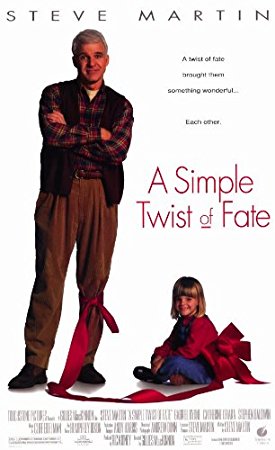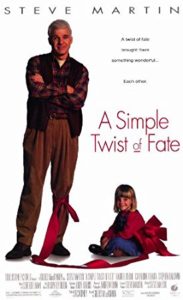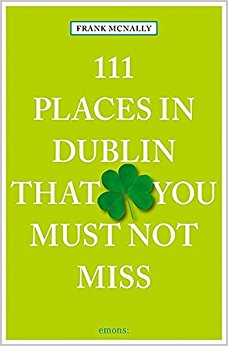
18
JanRevisiting Ayn Rand
 Last summer, I cleaned out a bookcase at home and came across a paperback copy of Atlas Shrugged by Ayn Rand from my early college days. It has followed me from my dorm room in the 60’s, to my parent’s home, and thru 2 moves in my married years. During the busy years of raising children and working, it sat forgotten on the shelf. What made it special was that it was personally autographed by Ayn Rand when I attended one of her lectures while in college. I don’t remember what the lecture was about nor do I remember meeting her. I wish I did. She was a very vocal and controversial political activist during the turbulent 60’s and her book, Atlas Shrugged, was as controversial as she was. The chance to see and hear her speak in person would have been a must.
Last summer, I cleaned out a bookcase at home and came across a paperback copy of Atlas Shrugged by Ayn Rand from my early college days. It has followed me from my dorm room in the 60’s, to my parent’s home, and thru 2 moves in my married years. During the busy years of raising children and working, it sat forgotten on the shelf. What made it special was that it was personally autographed by Ayn Rand when I attended one of her lectures while in college. I don’t remember what the lecture was about nor do I remember meeting her. I wish I did. She was a very vocal and controversial political activist during the turbulent 60’s and her book, Atlas Shrugged, was as controversial as she was. The chance to see and hear her speak in person would have been a must.
Ayn Rand was born in Russia in 1905 and suffered very negative effects of life under communistic rule until she received permission to visit relatives in Chicago in 1925. She vowed never to return to Russia and continued to live and work in Hollywood. I believe Ms. Rand was afraid that communism would follow her to America, and she used her writings and lectures to warn of its dangers. America in the 60’s was in turmoil; we were in the midst of the unpopular Vietnam War. In fact, one of reasons they told us we needed to go to war was to fight communism.
I decided to read or reread Atlas Shrugged. A few pages into it, I was sure that I either had not read it previously or certainly had not gotten very far into the 1,000+ pages.
It is a fictional novel that reflects Rand’s philosophy, Objectivism, but it is also a mystery of sorts. The reader is compelled to plow thru the 1,000+ pages to find out who John Galt really is.
Her major characters embody the traits of her philosophy and are in conflict with the world they live in. The principle of Ms. Rand’s Objectivism is multifaceted and complex. In her own words, “My philosophy, in essence, is the concept of man as a heroic being, with his own happiness as the moral purpose of his life, with productive achievement as his noblest activity, and reason as his only absolute.”
A comprehensive and detailed book about Ayn Rand, her life, her works and her philosophy is Ayn Rand and the World She Made by Anne C. Heller. It’s a must read for anyone interested in learning more about Ms. Rand.
I am sure that if Ms. Rand were alive today in this tumultuous political climate, she would again be a vocal and very controversial voice. In the meantime, her novels live on and speak for her. I’m glad I found, dusted off the pages, and read Atlas Shrugged. It was thought provoking, challenging and entertaining all at the same time.
Norma Logan is a Literacy Volunteer Coordinator at the Morrill Memorial Library in Norwood.

8
JanA Simple Twist of Silas Marner
 In the middle of the 19th century, Englishwoman Mary Anne Evans was afraid she wouldn’t be taken seriously as a writer unless she published under a man’s name. Women writers in the 1860s were stereotyped as writing light and frivolous romances. The mid-century was several decades before women like authors Jane Austen and Agatha Christie exploded on the literary scene along with Americans Louisa May Alcott and Harriet Beecher Stowe.
In the middle of the 19th century, Englishwoman Mary Anne Evans was afraid she wouldn’t be taken seriously as a writer unless she published under a man’s name. Women writers in the 1860s were stereotyped as writing light and frivolous romances. The mid-century was several decades before women like authors Jane Austen and Agatha Christie exploded on the literary scene along with Americans Louisa May Alcott and Harriet Beecher Stowe.
Mary Anne Evans was thought to be unattractive and not easily married off – so her father saw that his daughter was given an education as a young girl, something not afforded many young women in the 1800s. Her father Robert Evans managed a large estate with its own library. Mary Anne was given free access to the library where she honed her classical education aided by correspondence with her previous tutors from her younger years.
After her father’s death in 1949, Mary Anne (also known as Marian) was 30 years old. She soon traveled and lived in Switzerland, further cultivating her worldliness. She had already translated several works into English under her own name and, returning to England, she became a literary editor and reviewer. In 1856 she wrote an essay for a review journal titled “Silly Novels by Lady Novelists”. It’s no wonder that after that she used the pen name George Eliot instead of her own and the fact that “he is a she” has confused many of us ever since.
George Eliot wrote serious novels. Any English literature class or book group that has tackled The Mill on the Floss or Middlemarch learns that Eliot’s psychological insight isn’t for every reader or for uncomplicated discussion. Her first novel, Adam Bede, is not as well known by most readers but it has been in print ever since it was published in 1859. Adam Bede deals with some very real and unromantic themes at the turn of the 18th century in an English village – a love triangle, an unexpected pregnancy, and the murder by a mother of her child. It was published in three volumes and earned Eliot a respectful comparison to Charles Dickens.
A year later, she finished Mill on the Floss, also published in three volumes and set again in the English countryside in the late 1820s. Middlemarch, published in 1871-1872 was her next to last book and is regarded as her best work. It was published in eight installments over 16 months and one edition is 863 pages. Middlemarch deals with love, marriage, second changes and, like other important writers in the 19th century, social and political reform. Her last book, Daniel Deronda is the only one set in contemporary society – in 1870s England and Germany.
Evans had several scandalous affairs during her lifetime and she even considered herself married to philosopher George Lewe’s and changed her last name to his. However, he was already married to another woman at the time. In 1880, at the age of 61, she legally married John Cross, a man 20 years her junior. This marriage ended shortly after when she fell ill from a throat infection and died later that year.
All of Eliot’s works have been adapted to film – and most of them several times as silent movies (Adam Bede 1918), Silas Marner (1913, 1916 and 1922.), or full-length features like Mill on the Floss (1936). The BBC developed all of Eliot’s books for television films or mini-series beginning in the 1970s.
It’s Steve Martin’s genius that took Silas Marner, published by Eliot in 1861, and turned it into one of my favorite movies. A Simple Twist of Fate was released in 1994 and I could watch this film over and over. Martin wrote the screenplay and stars in the film. The film also features some other great actors – Gabriel Byrne, Laura Linney, blue-eyed Steven Baldwin and comical Catherine O’Hara.
Although Martin as a comedian has serious roles in other films, many of them rely heavily on wisecracks and slapstick. A Simple Twist of Fate relies on Martin’s portrayal of self-loathing, his awkward denial of a world outside of his own shriveled existence, and ultimately, his sweet and honest humanity. Although the film is described as a loose adaptation of Silas Marner, the key elements of Eliot’s work are all there. Martin’s character is school teacher Michael McCann’s whose life is shattered by his pregnant wife’s admission that their soon-to-born baby is not his. He, like Marner, is heartbroken and humiliated and he leaves his home to disappear into another countryside. McCann, like Marner, exists alone and isolated as a hermit who refuses to become a part of the community surrounding him. They both become obsessed with their craft – Marner with his weaving and McCann with his finish carpentry. They both hoard the gold they earn. McCann turns his hard-earned cash into antique gold coins that he hides in a secret drawer.
When their gold is stolen by a local creep, both characters despair and the plot thickens. However, when a young child shows up one snowy night, she teaches both Marner and McCann that the gold they lost can be replaced by a child’s love. Their humanity is recovered by this simple twist of fate.
Martin’s A Simple Twist of Fate made $3.5M at the box office. It holds only a 43% rating on Rotten Tomatoes dot com but I never pay much attention to reviews anyway. One of the most positive reviewers, Kevin Thomas of the LA Times, described the movie “as a “charming update of Silas Marner” that is well written, well played and has substance and a musical score that successfully bring [George Eliot’s] 19th century literature into a moving and powerful modern-day film.” I whole-heartily agree.
Charlotte Canelli is the library director of the Morrill Memorial Library in Norwood, Massachusetts. Read Charlotte’s column in the January 11, 2018 edition of the Norwood Transcript and Bulletin.

4
JanIt’s a new year! Changes are coming
 The beginning of a new year brings resolutions. Losing weight, learning a new skill, donating time — we’ve all made them. The thought of resolution makes me reflect on the many transitions in life that we all go through. Whether a welcome transition or an unwelcome change, we all need to adjust and grow.
The beginning of a new year brings resolutions. Losing weight, learning a new skill, donating time — we’ve all made them. The thought of resolution makes me reflect on the many transitions in life that we all go through. Whether a welcome transition or an unwelcome change, we all need to adjust and grow.
This past year has been a transition year for my family. We celebrated my daughter’s wedding in May as well as my nephew’s wedding a week later. My husband and I traveled to Los Angeles to celebrate Thanksgiving with my son’s future in-laws. The trip was a major change since I’ve been hosting Thanksgiving at my home for the last 20 years. My husband retired in April from a demanding position and is changing his focus in life. There were unwelcome changes with the passing of my mother at the age of 91 and the death of a close friend of a brain tumor at the age of 56.
We all experience changes. As a children’s librarian, I am often asked for books to help guide children through these transitions. We provide books that address death, divorce, fear, anxiety and anger. There are titles that discuss a jailed parent, a military parent and gay parents.
Throughout the library, foreign language sections have been created, and titles are continually added. The library supports patrons who are in flux, whether a recent immigrant learning a new language or enjoying reading in their first language, or a patron getting familiar with a new language.
The adult department provides many “self-help” guides to support readers during transitions. The 2017 title Option B: Facing Adversity, Building Resilience and Finding Joy, by Sheryl Sandberg, is an inspiring and practical book about building resilience and moving forward after life’s inevitable setbacks; Sheryl’s experience after the sudden loss of her husband provided her with the unfortunate background for the guide. Ask any reference librarian; they will direct you to materials that you seek in your quest for knowledge and strategies. Whether you are creating life changes or reacting to them, the library is a great source.
Make those resolutions, try your best, and best of luck adjusting to the changes in your life — whether good, bad, expected or unexpected. Happy New Year!
Jean Todesca is the head of children’s services at the Morrill Memorial Library.

29
DecMemories of Ireland
While you might not remember how to pronounce it, you probably do remember what havoc the Iceland volcano named Eyjafjallajökull created in the early spring of 2010. Gerry and I were scheduled to visit my youngest daughter who was living in Dublin, Ireland completing a graduate degree. Nasty volcanic ash spewed forth from Eyjafjallajökull and cancelled our trip. Chaos ensued for the entire week when our plans for a lovely Irish vacation were finally permanently shelved. Gerry’s disappointment was further complicated by my sadness that I wouldn’t be seeing my daughter who had left the previous fall for Dublin.
In 1983 I was lucky enough to live in Ireland for one full calendar year. My now-ex-husband and one-year old daughter and I arrived in the southern city of Cork just after Christmas in 1982. During our year, we spent many weekends driving back roads and touring practically every village, castle and sacred spot across the Republic. Our youngest daughter, Ciara, was born that summer in Cork which is the second largest city in Ireland with a population just over 125,000.
Our small family lived in the tiny village of Glounthaune, 7 kilometers east of Cork at the estuary of the River Lee. Not all houses in Ireland are named, of course, and not all years are spent magically, but ours was. Our rented home was surrounded by high stone walls. Near the wooden door opening to the entry was a plaque with the simple name: The Garden House. Our home was situated along a winding road leading north and overlooked an 18th century country house hotel and the Cork Harbour beyond.
We left Ireland just before the next Christmas to return to the United States, as was planned. What I hadn’t planned was my profound sadness leaving what had become a home in my heart.
I’ve returned as a tourist to Ireland twice since 1984. I took my daughters back to celebrate Ciara’s 10th birthday. I visited again in 2004 before I met my husband Gerry. After our marriage in 2007, I wanted to share some of my favorite places, moments and memories with Gerry. In April 2010, Eyjafjallajökull foiled those plans and many others. The weddings of all four of our children and the births of our six youngest grandchildren have kept us from remaking plans since to travel to Ireland.
My Christmas gift for Gerry this year was to surprise him with a long-awaited trip. Given the busy-ness of our lives, I’ve planned only five days and nights away. Norwegian Airlines recently added direct flights from Providence to Cork. We’ll depart on an overnight Monday flight – a perfect idea for a short vacation and arrive before breakfast. Our Saturday return, given the time change, gets us back home early in the evening.
Making air reservations is only the first step in travel. On a short trip, there is not the luxury of whiling away any time. Rambling and exploring have to be left for those fanciful and extravagant trips of more than a few weeks. That’s why I need to explore the travel guides well in advance of our trip planning an itinerary that will make the most of our five days. I’ve learned that driving around looking for overnight accommodations is never a good plan and advance reservations for convenient, centrally-located hotels and inns are next on my list.
This first visit will include arrival and departure from Cork, travel to Killarney to the west, to Kilkenny midway to Dublin, and to Dublin on the east coast. We learned the hard way on a trip to Italy a few years ago that a good up-to-date map is a must. Relying on Google maps can use up an entire allotment of data and can end up being a very expensive mistake. Cell service is often spotty in the least expected places, road blocks and detours can become hellish diversions to nowhere, and wrong turns waste an extraordinary amount of time. For that reason, I’ve invested in a recent edition of a Collins Roadmap of Ireland even though there are maps provided in any reputable guidebook. This way we can fold it this way and that and forget about having to replace a guidebook when we want to return it to the library.
Fodor’s Essential Ireland is published annually and I’ll be using it to search for up-to-date information on hotels in Killarney, Kilkenny and Dublin. While the Internet is a terrific resource, I want the straight-talk from locals and professionals before booking online. I’ll take a look at Frommer’s Ireland, Rick Steve’s Best of Ireland, and Lonely Planet Ireland which are all terrific overviews. Along with my own knowledge, the guidebooks will remind me of the best sites in the towns and cities we will visit. Both Lonely Planet and Frommer’s are also available on Hoopla, the library’s streaming and downloading service.
I’ll plan two nights in Dublin – feasting on the city where over half of Ireland’s population lives. Trips to the Guinness Brewery and Jameson Distillery are top on Gerry’s list and I’ll order advance tickets that I’m sure to read about in the guidebooks. We always take in a bus tour of every city we visit – we find it gives our feet a rest and the added audio or personal commentary is helpful.
I’ll have to be very careful choosing just the right places during our Dublin visit and so first I’ll consult 20 Things to Do in Dublin Before You Go for a Feckin’ Pint by Colin Murphy and Donal O’Dea! Next I’ll read both 111 Places in Dublin that You Shouldn’t Miss by Frank McNally and Secret Dublin: An Unusual Guide by Pól Ó Conghaile.
There are so many regions of Ireland that are distinct – from western Cork to Galway and Sligo just south of the Northern Ireland border to the mountains south of Dublin where St. Kevin’s tower nestles in Glendalough. We’ll have to save those for another trip which I’m sure will happen once Gerry has his first taste of Ireland. That’s when we’ll take Scenic Walks in Killarney by Jim Ryan and Dublin Strolls: Exploring Dublin’s Architectural Treasures by Gregory and Audrey Bracken.
Charlotte Canelli is the library director of the Morrill Memorial Library in Norwood, Massachusetts. Read Charlotte’s column in the December 28, 2017 edition of the Norwood Transcript and Bulletin.

29
DecNever too Late to Change
Funny. I had another article in mind to write for this week, and then it hit me. Garfield. Do you remember the craze around that persnickety cartoon cat by Jim Davis? When I was a teenager I loved following the comic strip. Actually, I loved everything cats (before I realized my allergies stemmed from my own cat, Oreo). I decorated my room with the Kliban Cat, the one who wore red sneakers. And every Sunday I couldn’t wait to sit down, newspaper in hand, to read Hägar the Horrible and Garfield.
So it was really no surprise when a stuffed animal version of Garfield appeared in our family Yankee Swap one year that I had my eye on him. I’d picked a good number too, or so I thought. The only problem? My eight-year old cousin had decided to enter the “grab.” Her mother had assured everyone that she knew the rules and we shouldn’t treat her any differently. When she opened the box that held Garfield, she had a look of sheer delight. But wait? I thought. She doesn’t follow the comics like I do. She doesn’t appreciate the humor between Garfield and his owner, Jim. Not to mention, like I said, I had the higher number. So when it was my turn, I went in for the kill. I swept Garfield in a flash and deposited whatever hand knit coat hanger or crocheted soda can hat I’d opened instead.
I should have been ready for the tears, but I wasn’t. The right thing to do would have been to put myself in her place. Instead, I reassured myself I was playing the family game fairly. After all my cousin had said she wanted to be a part of the “adult” swap. Wasn’t I justified in taking the gift from her? The terrible thing was I didn’t feel so great after I took it. Not to mention the adults looked at me like I was the Grinch. Suddenly Garfield didn’t feel so warm and snuggly in my arms.
As it turned out I didn’t have the best number. Number 1 belonged to my Uncle Norman. He was the loveliest great uncle. He did things that other uncles wouldn’t typically do. He loved to bake (I still make his Quiche Lorraine). He kept finches in his tiny apartment. He crafted hats for ladies on Newbury Street and he could whip up a dress or skirt for my grandmother in no time. He also had heart of gold. I don’t remember what he said to me when he came over, but I know he folded Garfield in his arms and handed him to my tearful cousin.
That was one night when my personality didn’t shine, but I’d like to think my character has changed over the years. Don’t get me wrong, I still love unwrapping presents at the holidays. However, I’ve matured enough to know that it’s not the “things” in life that matter. At this time of year especially I’m reminded of Ebenezer Scrooge from A Christmas Carol. Who doesn’t love to read Charles Dickens’ story or watch the movie? Who can forget Scrooge’s dramatic change of heart? Perhaps Dickens’ story has stood the test of time because there is a bit of Scrooge in all of us. The night I took the stuffed animal away from my cousin, I was young and driven by the selfish desire to own Garfield. The good news is people do change.
Recently I read The Storied Life of A.J. Fikry by Gabrielle Zevin and I fell in love with a bookseller named A.J. Fikry. He was a character whom I could relate to because he becomes a better person. In the beginning of the book, he is a young curmudgeon. His life is not going according to his plan. Not only has his wife died unexpectedly, but he has been left in charge of a desolate bookstore on the island of Alice. His misery consumes him and the only pleasure he finds is in his books, especially a rare one that he owns by Edgar Allan Poe.
And then, as with all good stories, something unexpected happens. Someone steals A. J.’s precious book, Tamerlane. Around the same time something, or should I say someone, arrives in his bookstore that turns his life around. I don’t want to give too much away but, like Scrooge, these events move A.J.’s soul like nothing has done before. In the process, his bookstore begins to become a center of community, like a well-run library.
Granted The Storied Life of A. J. Fikry and A Christmas Carol are works of fiction, and yet fiction reveals truth, too. We might not meet with Marley’s Ghost in the middle of the night, but it’s nice to know that we have the ability to change our outlook on life. We can choose to become more caring and less self-absorbed. Maybe it’s as easy as bringing some figgy pudding to a friend’s door or shoveling the walkway for a neighbor. We only need to be open to that stirring.
Today I will be delivering a pink hoodie and bracelets to a young girl whose father is incarcerated in a local prison for the Angel Tree. As I write, I wonder if she likes cats. If I could find one, I’d like to wrap up Garfield to go with the other packages. That might be a good sign that I’ve come full circle. Still I know I have “miles to go before I sleep.” Either way, I’ve learned the same lesson as Scrooge and A.J. Fikry: “It is more blessed to give than to receive.”
Here’s wishing you a very happy holiday!
